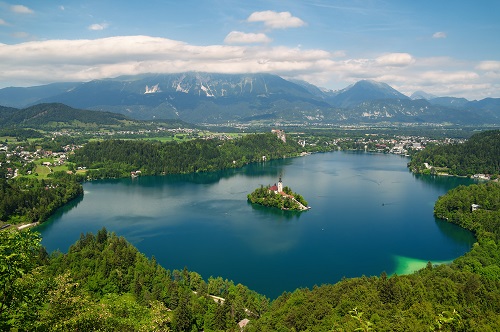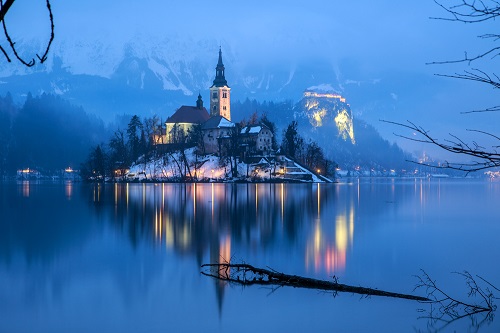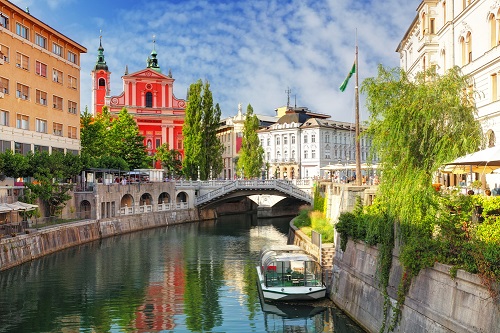If you love keeping fit in the great outdoors, the Republic of Slovenia is the perfect choice for your new home. Slovenia is a small but beautiful country, with Alpine mountains in the northwest, Mediterranean coastline in the southwest, and forest covering more than half of the territory. It therefore comes as no surprise that Slovenians love getting out and exploring. There is something for everyone, whatever your fitness level and preferred exercise style.
Slovenia is generally regarded as a healthy country, with one of the highest life expectancies in Europe. At 81.39 years in 2017, Slovenian life expectancy overtook the EU average of 80.9 years. As is common in many similar countries, the leading cause of mortality is heart disease. Rates of type two diabetes and obesity have increased nationally in recent years, and childhood obesity is a key problem. To combat this, the Slovenian government operates several healthy lifestyle initiatives.
In line with World Health Organisation (WHO) guidelines, the government recommends that adults aged 18 to 64 undertake at least 150 minutes’ moderate intensity or 75 minutes’ vigorous intensity aerobic exercise (or an appropriate combination of both) per week, with at least two sessions of muscle strengthening for the main muscle groups. In primary schools, 45-minute physical education (PE) lessons are mandatory two to three times a week, and the healthy lifestyle scheme provides five extra hours of after school exercise. In secondary schools, one to three 45-minute PE lessons are required weekly.
Under the Occupational Safety and Health Act (ZVZD-1), employers are required to plan and implement ‘workplace health promotion’ activities that should encourage improved physical and mental health.

Sports in Slovenia
Slovenia is a very sporty country, with a national team presence in many international tournaments, despite the country’s relative smallness. Slovenians’ favourite team sports are football, basketball, boxing, handball and ice hockey, with cycling, swimming, tennis, skiing, ski jumping and athletics popular individual pursuits. Football is by far the most popular sport, with 287 clubs, 1,400 coaches and 38,000 players registered nationally in 2019.
Given the country’s 58% coverage of forest, its network of caves, and its 10,000km of mountain trails, hiking, climbing and caving are popular pastimes. There is even a national saying that you are not a true Slovenian until you have summited the country’s highest mountain, Triglav. If you plan to do a lot of hiking, you may find a membership with the Alpine Association of Slovenia beneficial to keep your costs low.
If you are looking to lift weights, work with a personal trainer, or simply to work out indoors, there are several gyms throughout Slovenia. Popular choices include Fitinn, 4P Fitness, Alfa Gym and Maxx Gym. Gyms charge by the month, but some also have the option to pay for each visit or to buy packages of visits that are valid for a set period of time. Monthly fees start as low as €20 for basic access, and a one-off visit should cost you around €8.
Diet and cuisine in Slovenia
Slovenia’s local diet is something of a melting pot of the different cuisines in the nearby countries of Hungary, Austria, Germany, Italy and Croatia. The main components include cereals (particularly buckwheat), pork, fish, bread, pastry, potatoes, pasta, fruit, vegetables and beans.
Traditional and popular Slovenian dishes include kranjska klobasa (Carniolan sausage), pršut (air-dried ham similar to prosciutto), Žlikrofi (stuffed ravioli-type pasta), and soška postrv (river trout). Blejska Kremšnita (Bled cream cake), the round, nutty Slovenska Potica holiday cake, and various kinds of a doughy, layered dumpling called štruklji are popular sweet treats.
A traditional Slovenian breakfast comprises fresh bread, butter, honey, apples, and a glass of milk. However, these days, it is much more common to have a continental-style breakfast, including meat, eggs, cheese, cereal, bread, juice, tea and coffee.
Lunch is the main meal in Slovenia, and Sunday lunch is an important tradition. This will typically consist of a hearty beef, vegetable or mushroom soup with noodles or semolina dumplings to start, a main of meat with roasted potatoes and salad, and fruit strudel, most commonly apple, for dessert. Dinner is usually a simple and light plate of meat and cheese with salad.

Similar to other countries in the region, Slovenia is renowned for its beer, wine and schnapps, but it is also known for having some of the best quality water in the world. Although quality varies between cities and the more remote countryside, you can expect great tap water in the territory, especially in the capital, Ljubljana.
Given the high rates of diabetes, obesity and cardiovascular disease, in recent years, the Slovenian government has focused on promoting a low-fat diet, rich in fruit and vegetables. School meals are subsidised to minimise the disadvantage to children from lower socioeconomic backgrounds, and workplaces are encouraged to make healthy food available and promote a healthy diet and lifestyle to employees.
Thanks partly to the Italian influence on Slovenia’s cuisine, it is relatively easy to follow a vegetarian or vegan diet in Slovenia when dining out. You can also enjoy fresh produce from supermarkets. Salads and pasta dishes are popular, and Slovenians are keen gardeners who usually grow their own vegetables and herbs. There are many tourist farms, where you can pick your own locally grown produce. Seasonal favourite fruits and vegetables include dandelions, lamb’s lettuce, asparagus, cherries, berries, mushrooms, nuts, pears, root vegetables and apples.
Keeping fit and healthy is important, and the diversity of the cuisine and landscape in Slovenia should make it enjoyable. There’s a lot to explore in the territory, so make sure you take the time to get out in the Slovenian countryside as much as possible.

